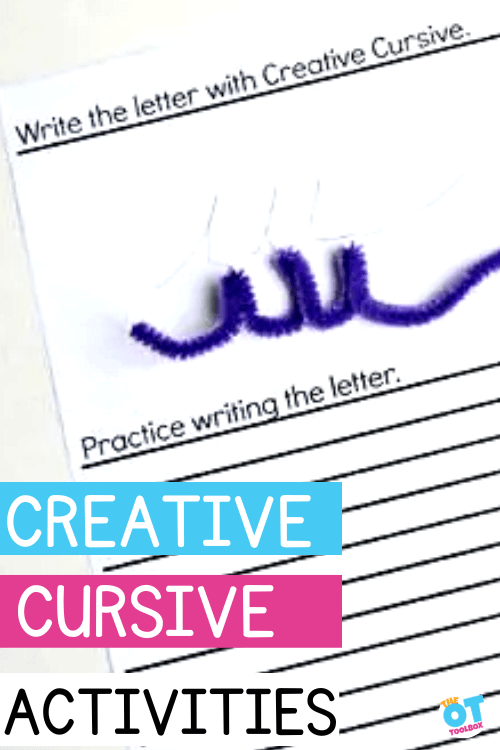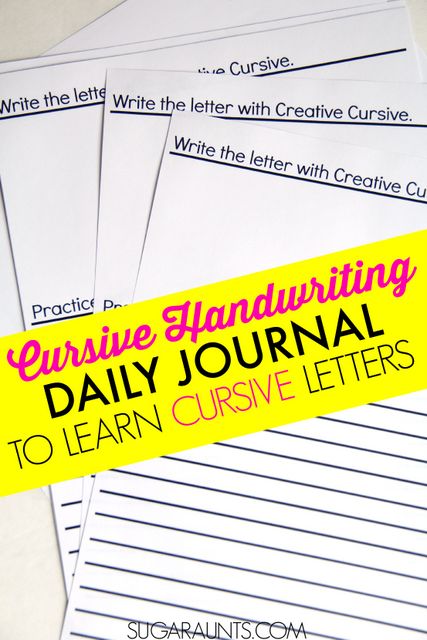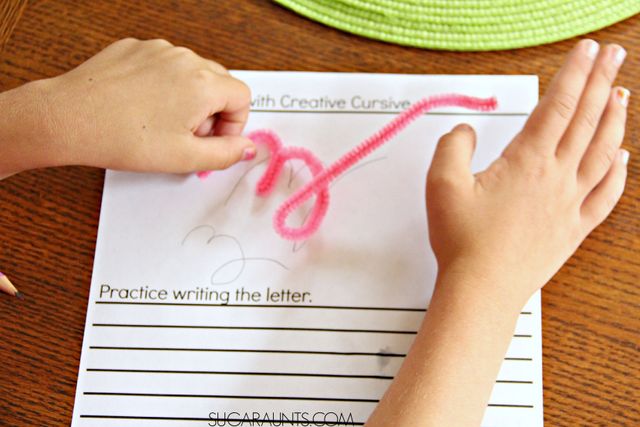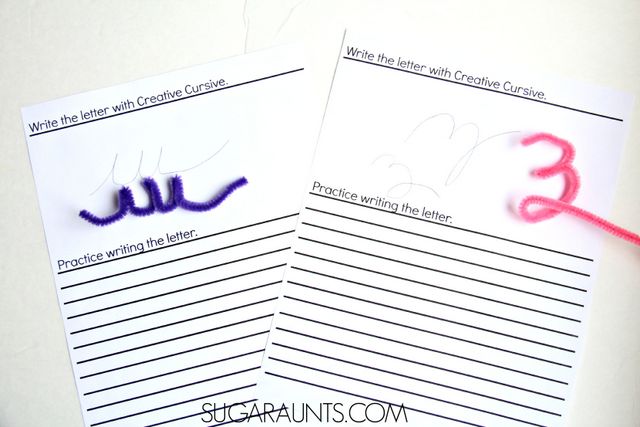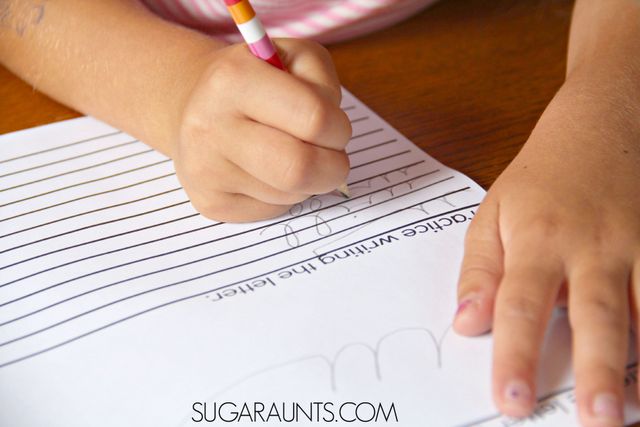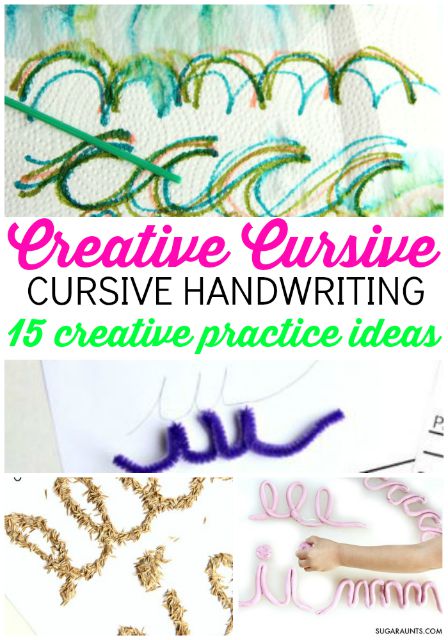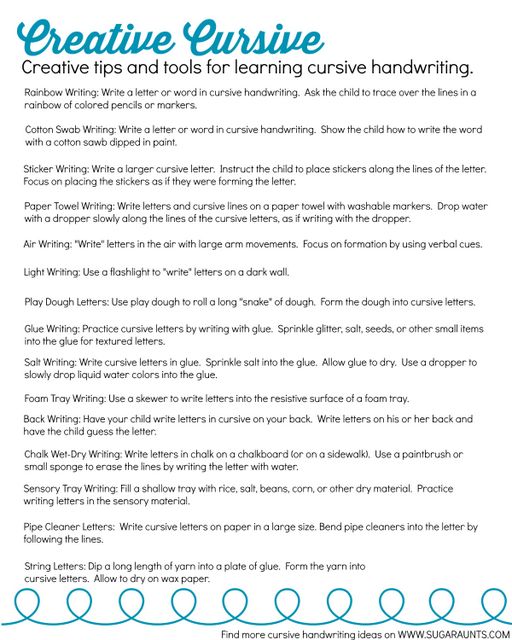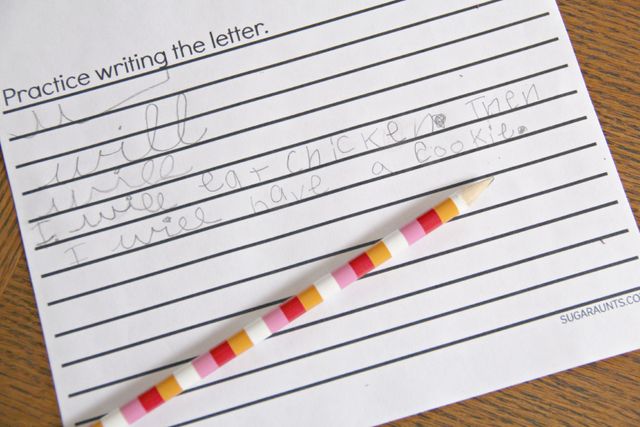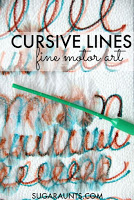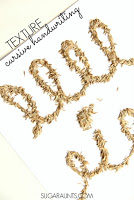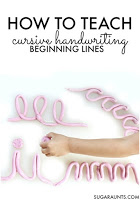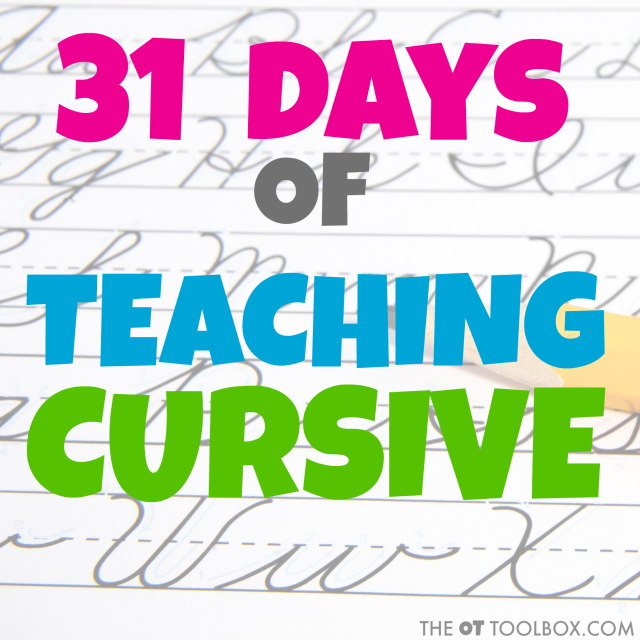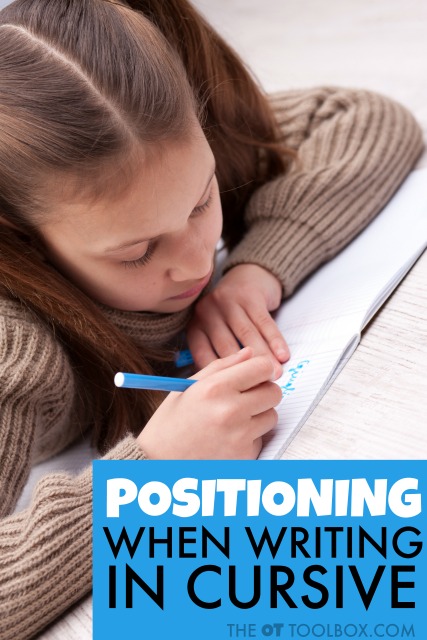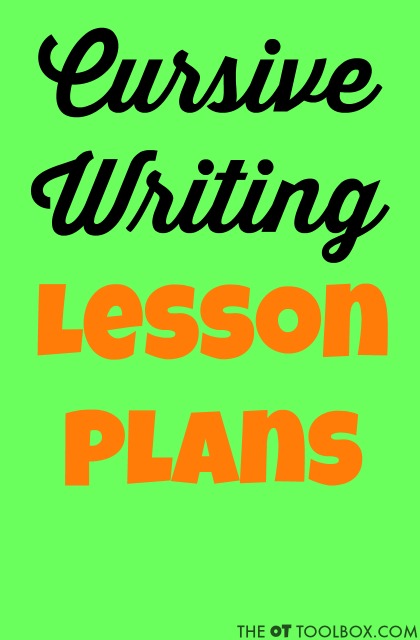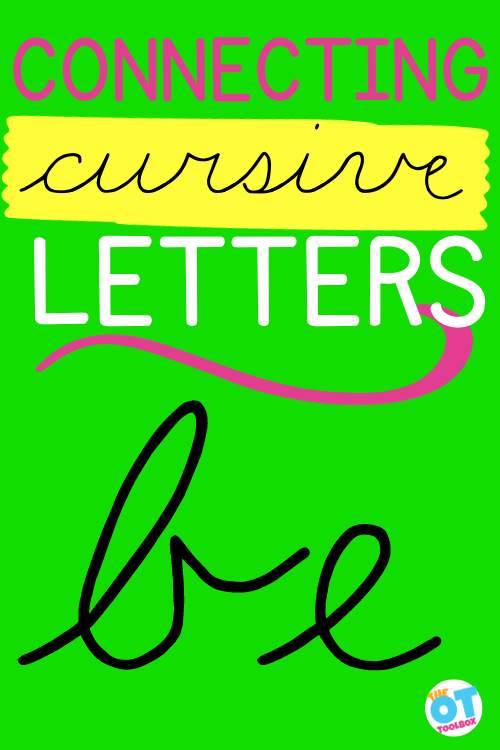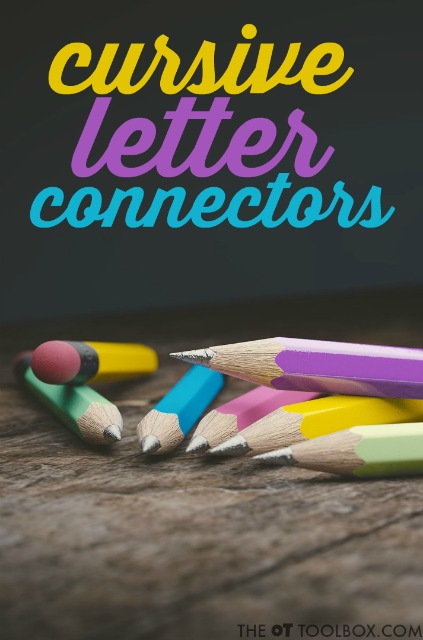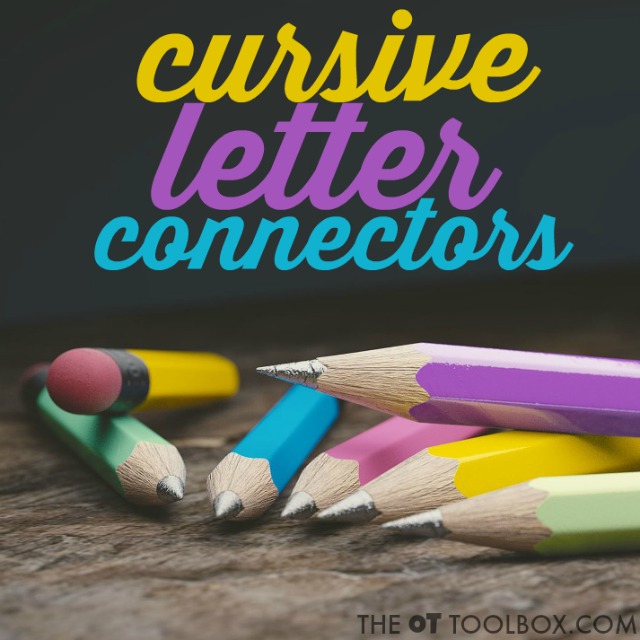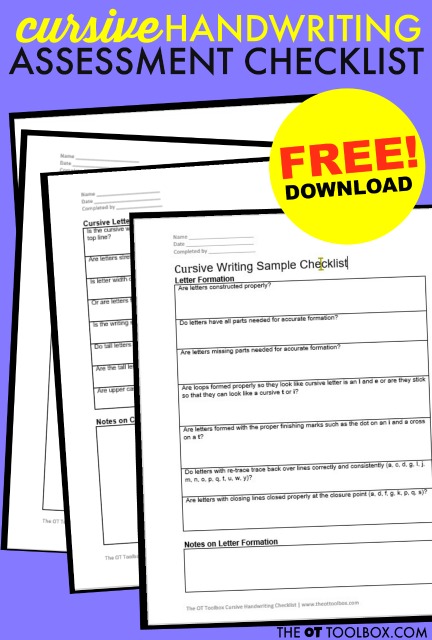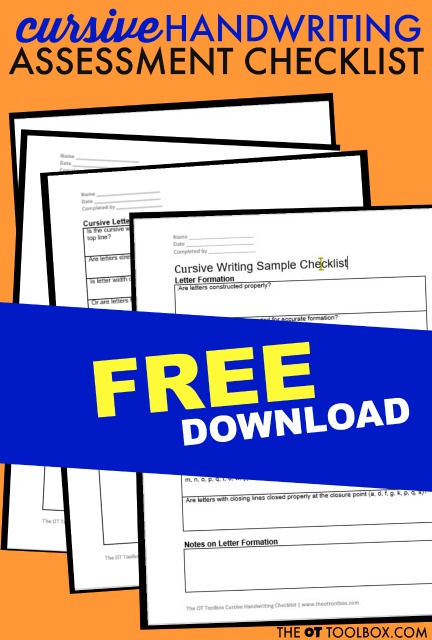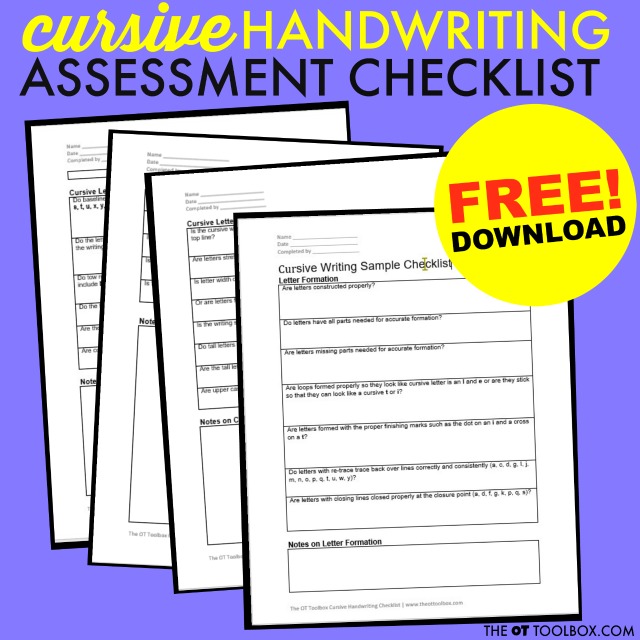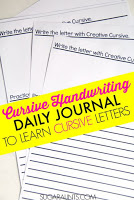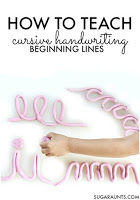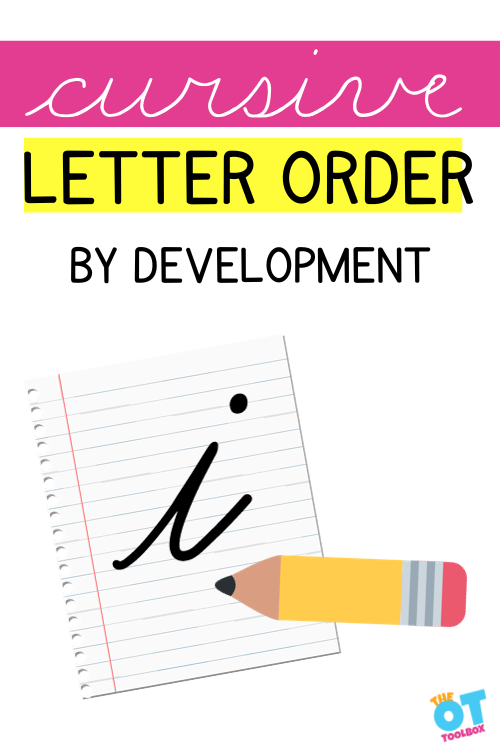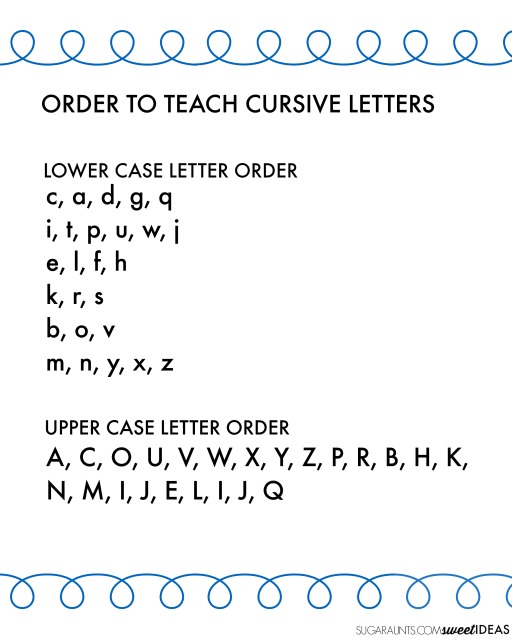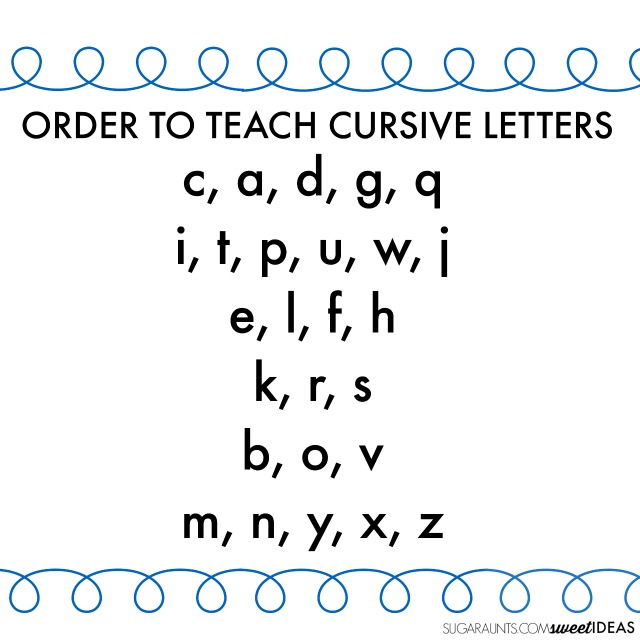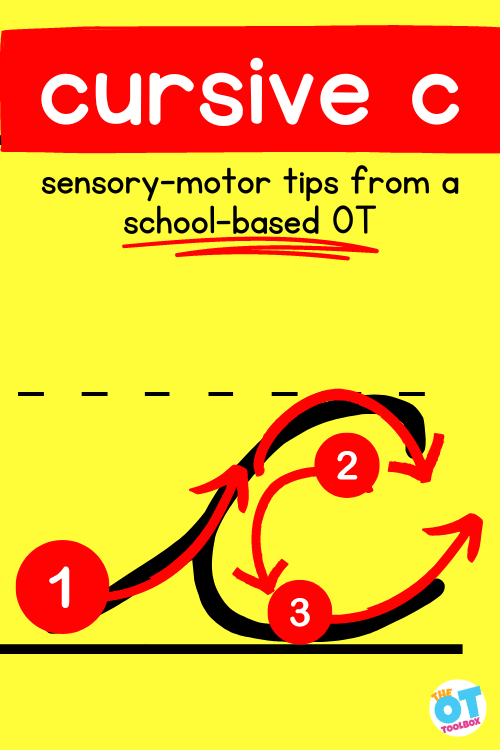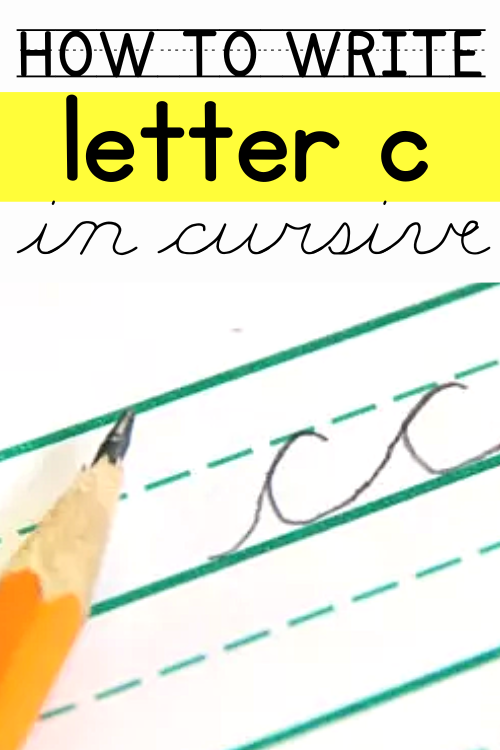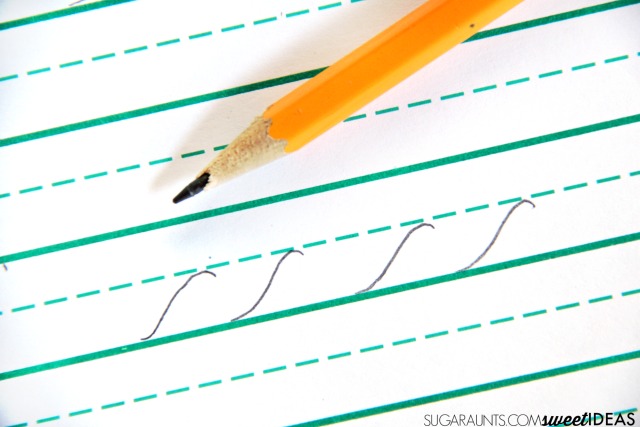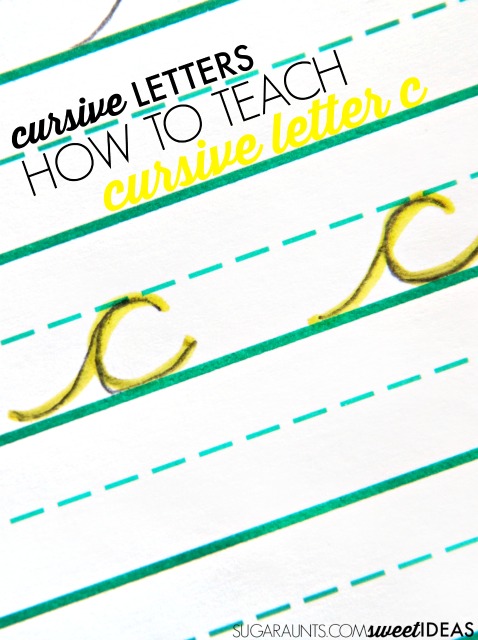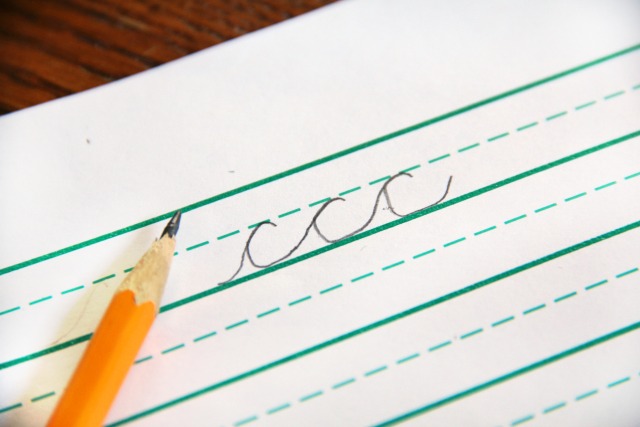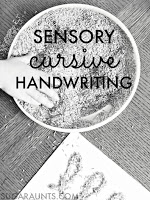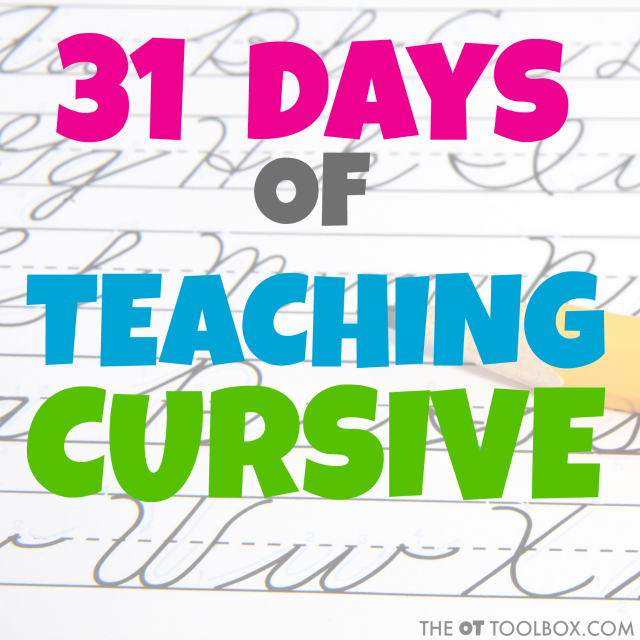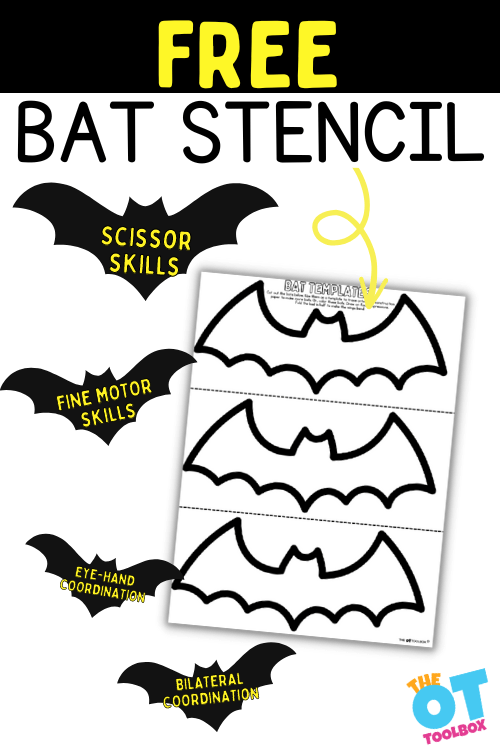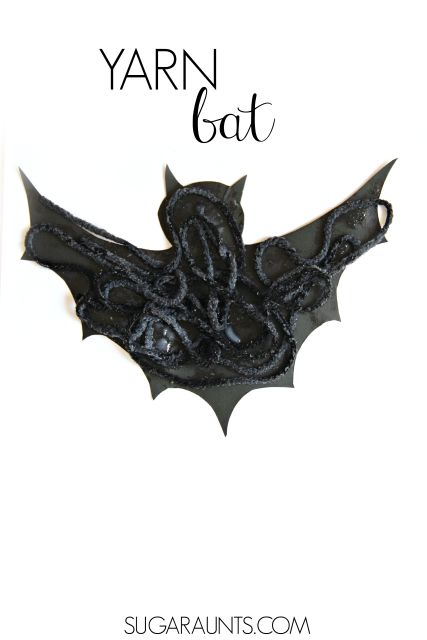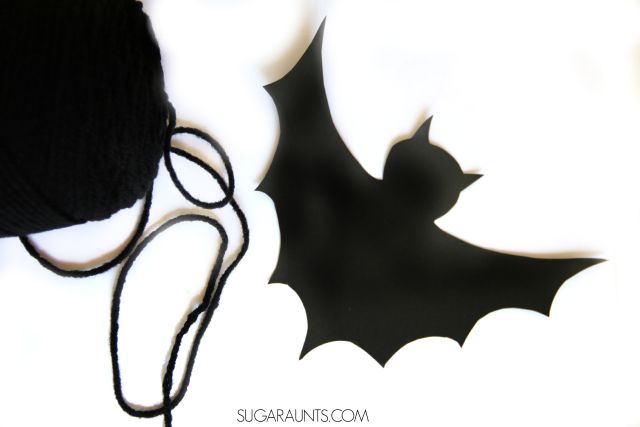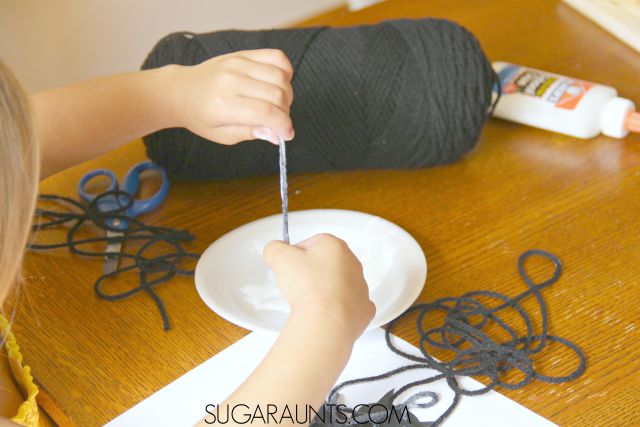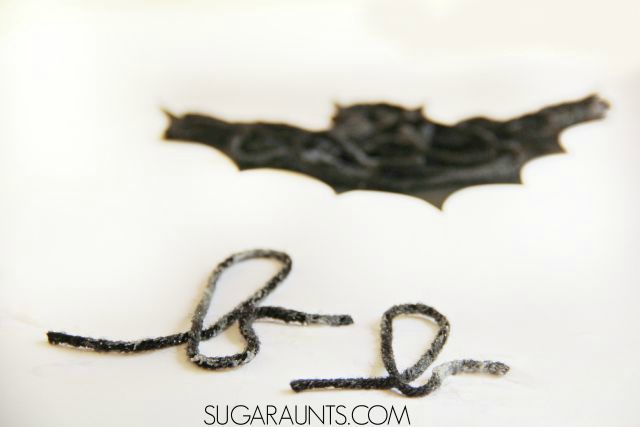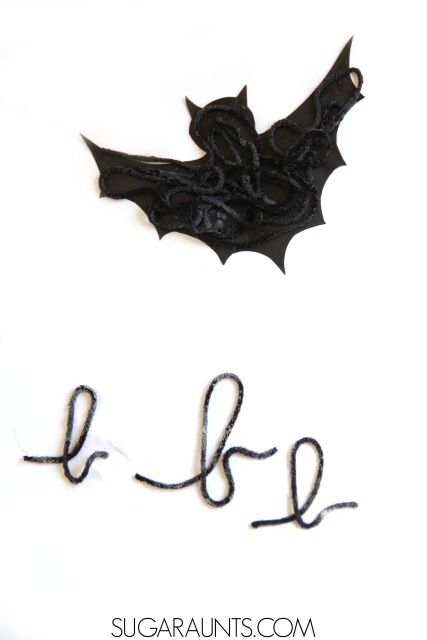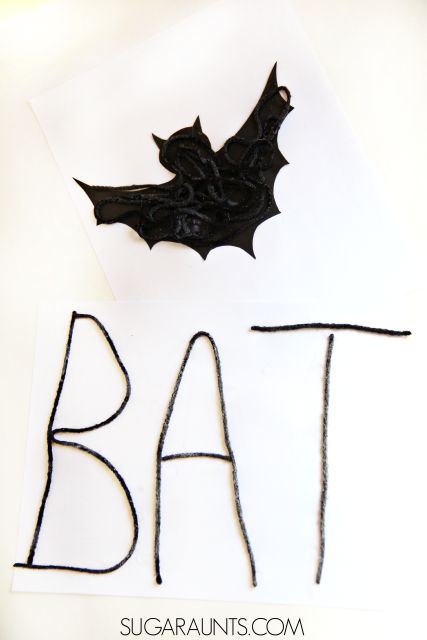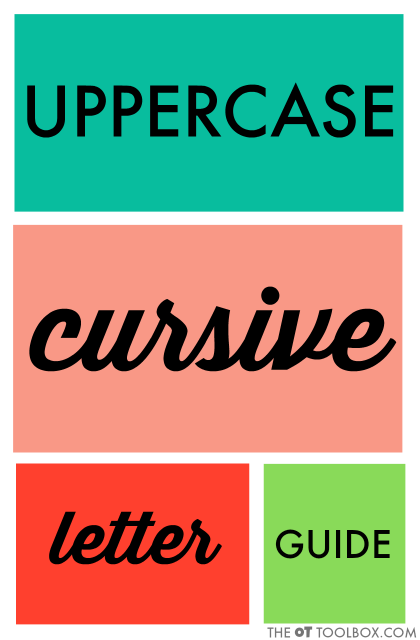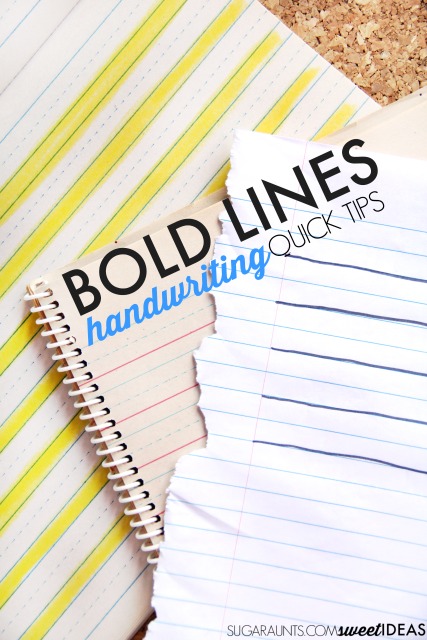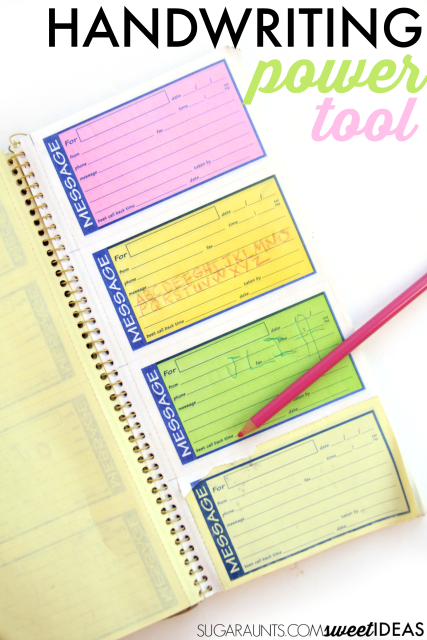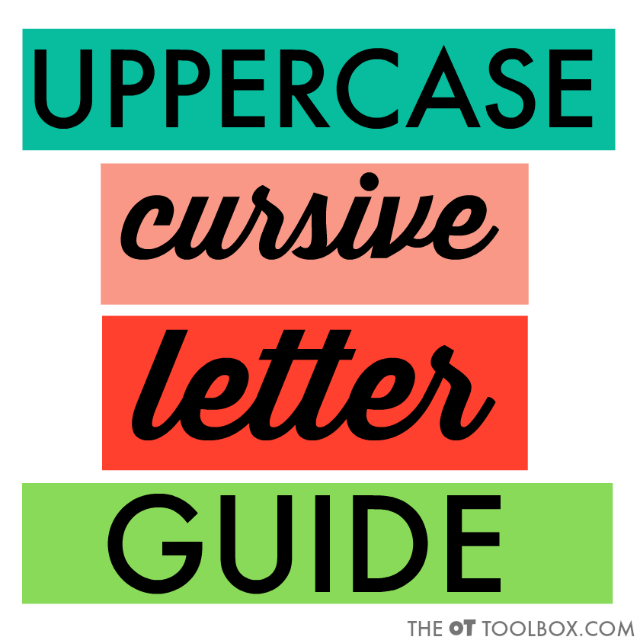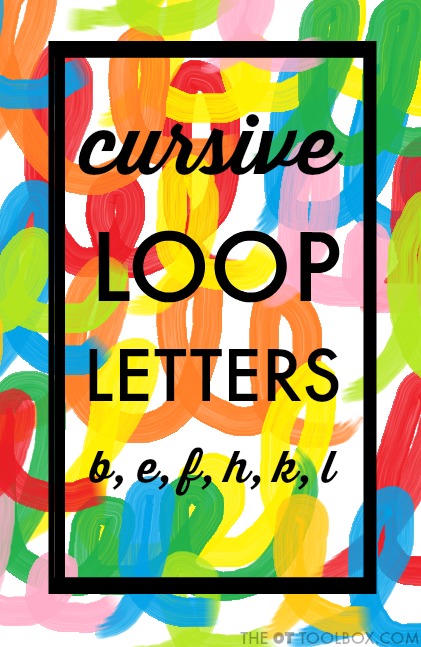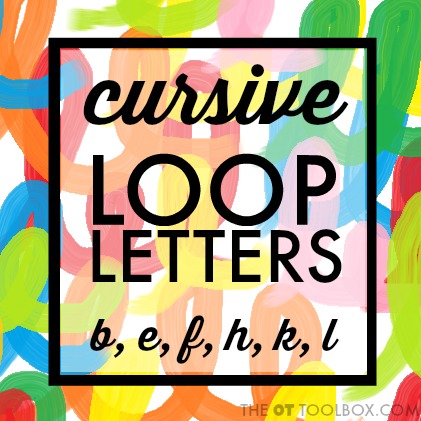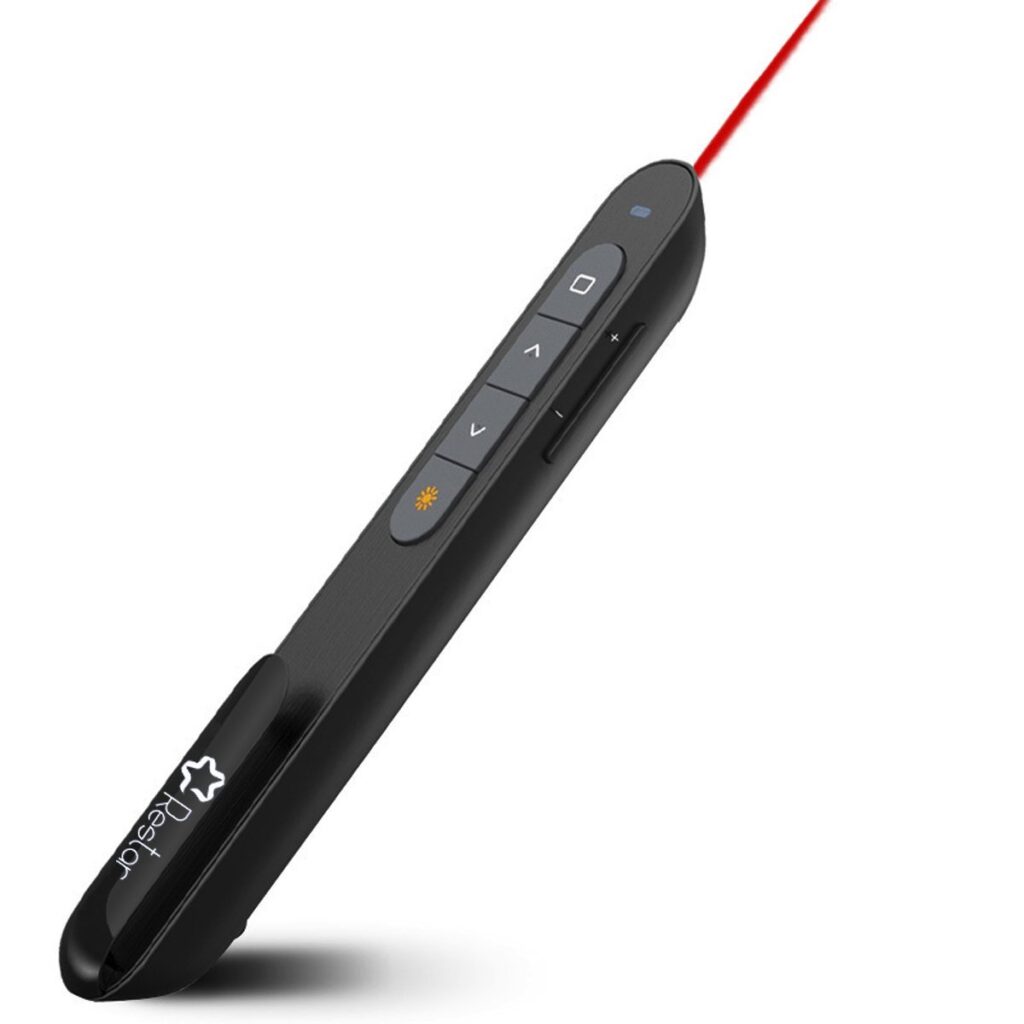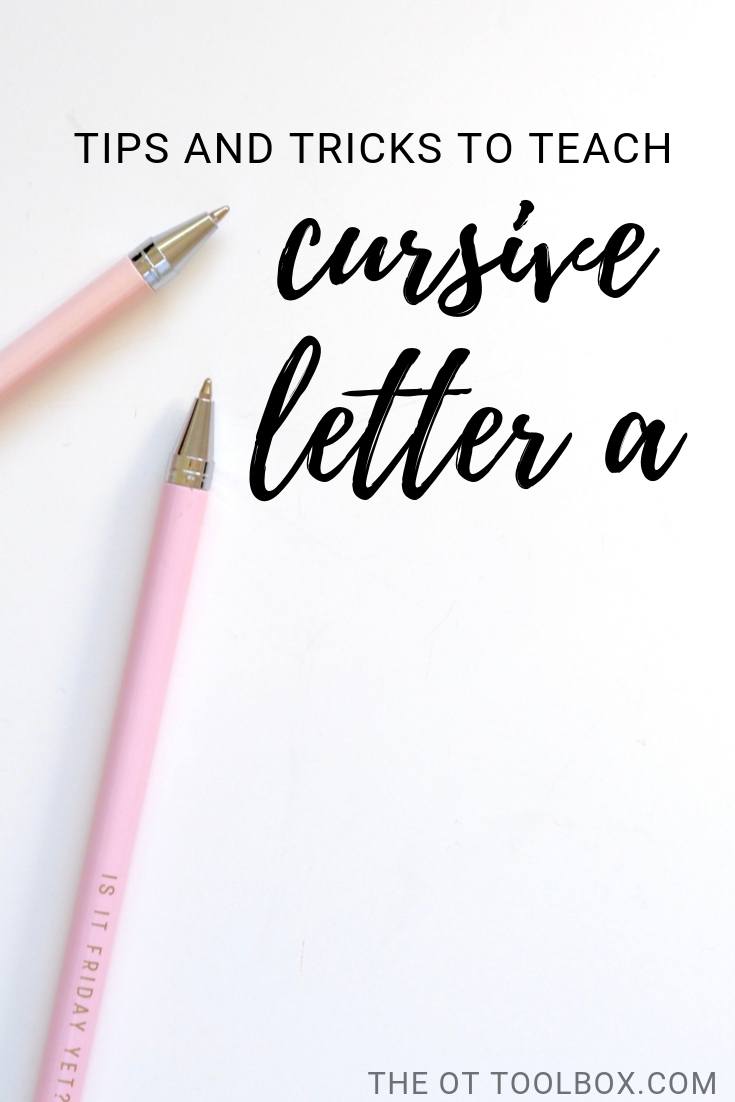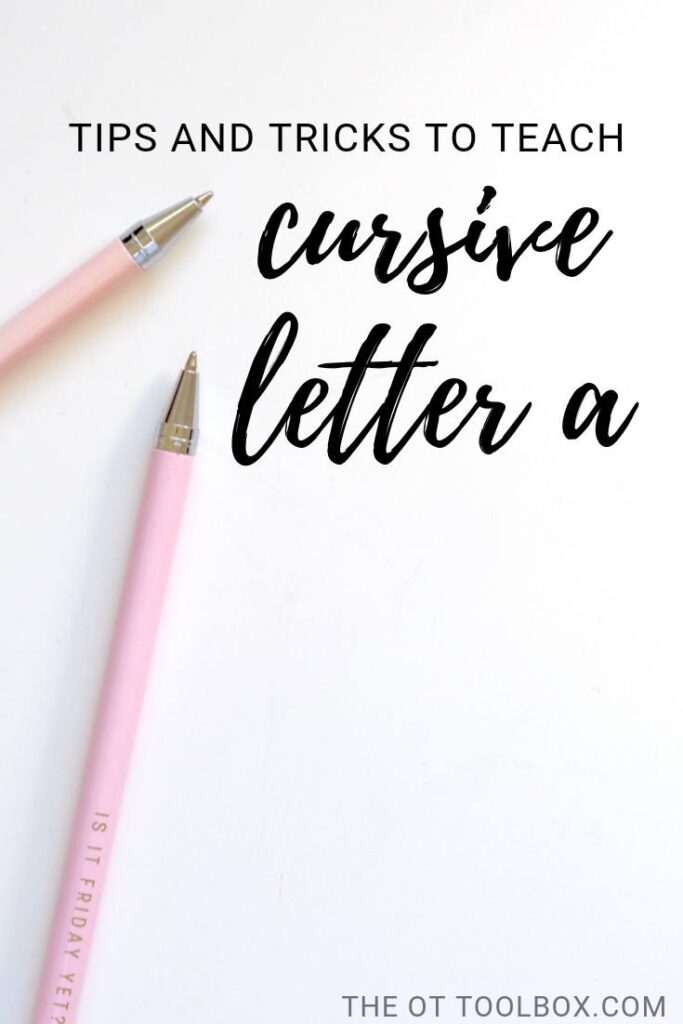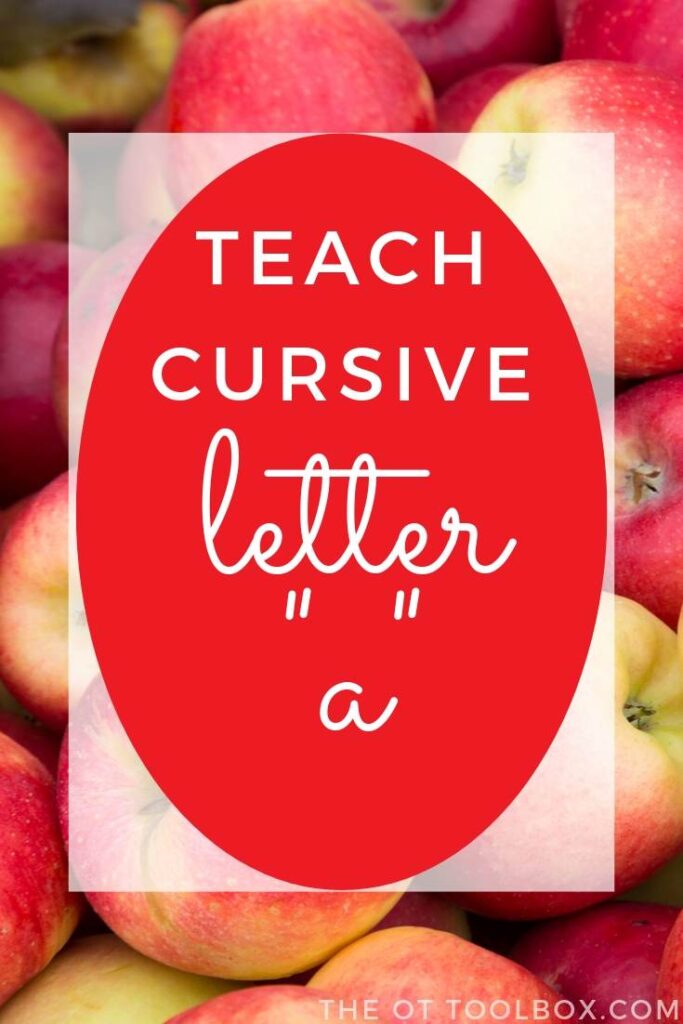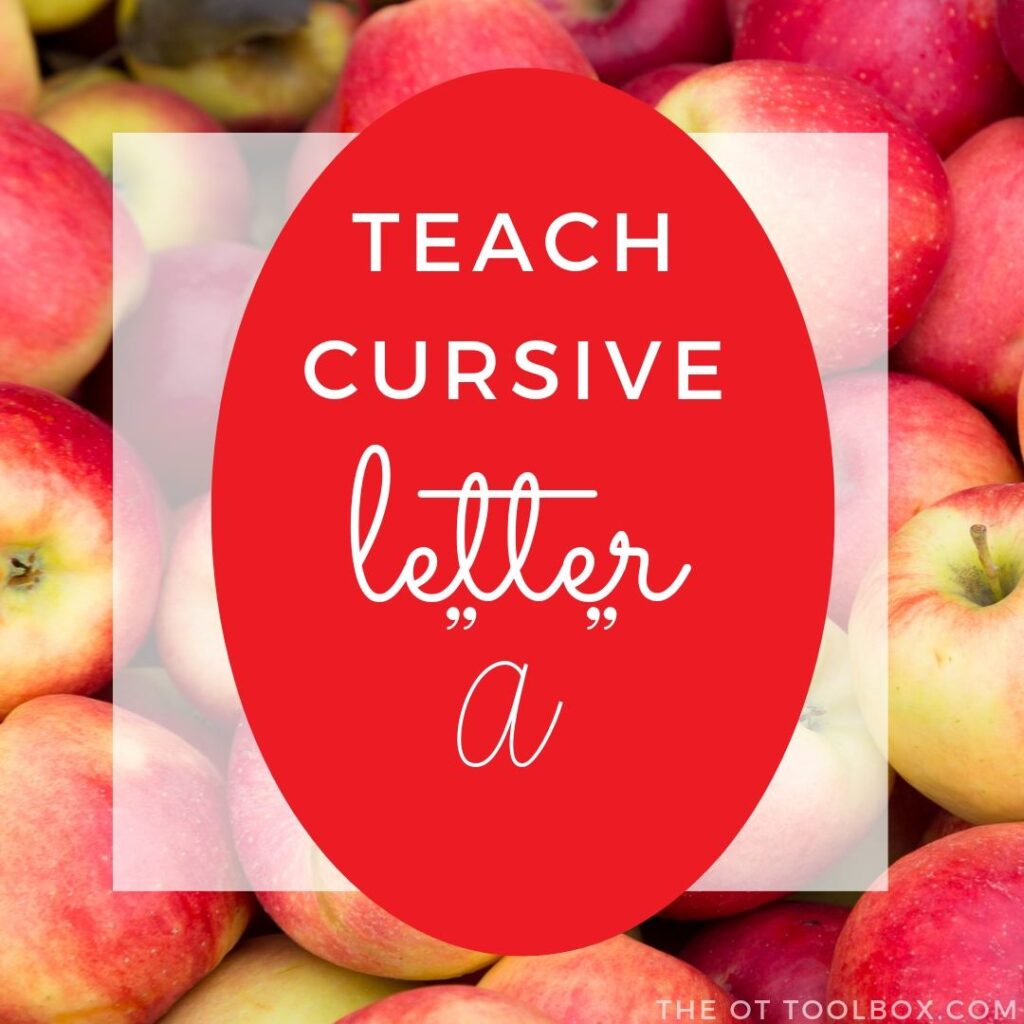Teaching kids to write uppercase cursive can be quite tricky. Upper case cursive letters are part of handwriting and everyday written expression, but when it comes learning the motor plan for forming uppercase letters in cursive writing, establishing fluent writing is needed for accuracy. Below you’ll find tricks for teaching uppercase cursive letters and uppercase cursive letter formation.
Upper Case Cursive
In this blog post, we refer to the terms “upper case cursive letters” and “uppercase cursive”. The semantics of describing capital letters in cursive is simply for understanding the material, and meeting the needs of all individuals seeking resources on teaching upper case letters in cursive formation.
Let’s get started with the uppercase cursive writing resources and tips.
Some uppercase cursive letters are not used as often as their lowercase counterpart.
When kids learn to write their name in cursive and become proficient at their cursive signature the uppercase letter is just part of the writing motor plan becomes natural and a personal part of a personal style.
There are many uppercase cursive letters that can easily be forgotten simply because they are not used very often!
This post is part of our 31 day series on teaching cursive. You’ll want to check out the How to Teach Cursive Writing page where you can find all of the posts in this series.
For more ways to address the underlying skills needed for handwriting, check out the handwriting drop-down tab at the top of this site.
Uppercase Cursive LetterS
Some students develop a natural speed and personal writing style and will prefer to write in cursive. Other students will write only their signature in cursive. Still other students develop a natural speed and personal style and may mix upper and lower case cursive letters.
If you look at the average adult handwriting you may notice that there is a mixture of printed and cursive letters. The goal being functional written work, this is fine for adults and individuals who are writing for speed such as high school students.
However, consistent and accurate formation is needed for formal written work in cursive.
Like the cursive letter families for lowercase, the uppercase letters are divided up into groups of families based on pencil strokes.
Teaching kids to write cursive upper case letters is broken down by formation and pencil strokes. We’ve listed the letters out in groups below to support letter formation and motor planning skills.
Read this resource on motor planning and handwriting to better understand this concept.
The descriptions are designed to promote the easiest formation style of cursive letters, eliminating extra lines such as the beginning loop of uppercase cursive letter C.
The letters that are exact replicas of their printed counterparts are designed to ease transition for letters that are not commonly used in written work. This is a tactic of the Handwriting Without Tears letter order strategy.
Uppercase Cursive Letters D, F, T
Cursive D, F, and T are Uppercase Cursive letters with a downward start.
These letters include D, F, and T. These letters all start with a downward stroke of the pencil. Let’s break these letters down by formation and pencil strokes.
Uppercase cursive D begins down followed by a loop to the left upwards with a curved back to the baseline and a big round curve to finish off the top.
Uppercase cursive F starts in the middle of the letter with a downward stroke followed by a curve to the left and a crossline. Then on top is a crossline topper.
Uppercase cursive T starts with a middle down work stroke in the middle of the letter followed by a curve to the left and no crossline. Then on top is a crossline topper.
Uppercase Cursive A, C, E, O, and Q
Upper case cursive A, C, E, O, and Q are considered “Right curve start uppercase letters” because the pencil stroke starts in the right upper corner. This group includes uppercase letters that start on the right side and curve left. Consider the formation of these letters much like the formation of a printed c.
Uppercase cursive A starts at the right top line and curves to the left with a big C motion to the baseline. The pencil then curves up to close a letter causes at the top line. Retrace back down in loops a way to connect.
Uppercase cursive C starts with a right curve start at the top uppercase C
Uppercase cursive E starts with a right curve start at the top line. It includes two small curves pausing at the middle line before curbing again to the left to the baseline.
Uppercase cursive O is a right curve start beginning at the top line and curving in a big city motion to the baseline. It continues around to close the lot start has a small loop at the top.
Uppercase cursive Q is a right curve start letter beginning at the top line and curving in a big motion to the baseline. Q continues around to close the top of the letter and has a small loop at the end. It then has a kickstand line to complete the letter.
Uppercase Cursive B, P, R, L
These letters are considered “Rocker start uppercase letters“. Uppercase B, P, R, and L begin with a small curving motion to begin the letter at the top line.
Uppercase cursive B starts with a rocker start followed by a straight line down to the baseline. It retraces up to the top line and curve around right to the middle line. Pause and curve around right to the baseline.
Upper case cursive P is a rocker start cursive letter. The letter starts with a rocker line to the top. Straight line down to the baseline. Retrace up to the top line. Curve around with a small curve to the middle line.
Upper case cursive R is a rocker start cursive letter. The letter starts with a rocker line to the top. Straight line down to the baseline. Retrace up to the top line. Curve around with a small curve to the middle line. Kick out to the baseline with a slant.
Upper case cursive L is a rocker start letter that continues with a small loop down to the baseline. The line continues with a small group and diagonal line to connect as it swings away to the baseline.
Upper Case Cursive I and J
Next up in teaching cursive capital letters are the “Left curve start letters“. These letters switch pencil stroke directions and have a starting point on the opposite side of the other letters previously covered. There are just two letters start with a left. These include uppercase letter I and J. Both letters start with the pencil moving in a left line direction.
Uppercase letter I is a left curve start letter. The letter starts at the baseline and swings in a loop to the left and turns at the top line. It continues the tall loop back to the baseline, but continues the motion until reaching the middle line. The pencil pauses and pulls in toward the loop at the midline.
Uppercase letter J is a left curve start letter. The letter starts at the baseline and curves left and then up to the top line. It swings straight back down to the baseline and pass the baseline with a table. The line then swings left and then curves up and away to connect.
Upper Case Cursive H, K, M, N, X, W
Next up are the “Top loop start letters“. Several letter start with a top-starting loop that continues down. These letters include capital H, K, M, N, X, and W.
Uppercase cursive H begins with a top loop that continues down to the baseline. The pencil picks up and starts again at the top line. The pencil stroke goes straight down to the baseline and then swings away to touch the initial pencil line. It swings in a loop and then connects over to the second line.
Upper case cursive H is one of a few letters with two pencil strokes where the pencil picks up to continue a letter. Most cursive letters and all other cursive letters use only a single pencil stroke.
Uppercase cursive K is a loop start letter. It begins at the top with a link to the right on the lease straight line down to the baseline. This is much like the uppercase letter H. However with the K, the second line starts at the top line and continues in to cross the first line with a small loop and then continues out again to the baseline.
Upper case cursive M is a loop start letter that begins at the top line with a loop. The line continue straight down to the baseline and stops. It retraces up over the climb to the top with a bump and continues down to the baseline again. The pencil strip retraces back up that one to the top line and bumps over to the baseline
Upper case cursive N is a loop start letter that begins at the top line with a loop. The line continue straight down to the baseline and pauses. It re-traces back up and curbs away with a bump at the top line. The line continue straight down to the baseline and stops.
Uppercase cursive X is a loop start letter that begins with the loop at the top line followed by a diagonal line down to the baseline. The pencil is picked up and continued at the top line and has a diagonal in the opposite direction to cross at the middle of the X.
Upper case cursive W is a loop start letter that begins at the top line with a loop. The line continues down with a bottom bump inverted bump at the baseline that continues up to the middle line and beyond to the top line. The line is retraced back down with an inverted pump at the baseline. The line continues back up to the top line.
Upper case cursive U, V, W, Y, Z
The last remaining uppercase cursive letters are ones that are very similar information to their lowercase counterparts. They are quite similar in most cases to their printed letter.
These letters include U, V, W, Y, Z
Uppercase cursive U is an exact replica of its printed counterpart.
Uppercase cursive letter V is an exact count a part of its printed counterpart.
Uppercase cursive W is an exact replica of its printed counterpart.
Uppercase cursive Y is an exact replica of it’s lowercase cursive counterpart.
Uppercase cursive Z is an exact replica of the lowercase Z form.
Uppercase Cursive letter practice
Now that you have the specific letter formation directions down and the order to teach uppercase cursive letters, the next step is practice!
Creating a motor plan for automatically creating letters supports handwriting speed, autonomy, and legibility. Practice makes perfect, after all!
But how do you help kids (or adults) create that motor plan for uppercase letters?
Adding sensory motor handwriting strategies! Use the ideas below as a practice component for practicing uppercase cursive writing.
Bold Lines Handwriting Trick– Work on forming uppercase cursive letters on the lines using this bold lines trick.
Teach Handwriting with Transfer Paper– Work on that motor plan for uppercase cursive by using transfer paper.
DIY Desk Letter Strip– Make an uppercase cursive letter strip to using forming letters correctly and grouping uppercase cursive letters into families based on the way the pencil strokes go.
Work on Visual Perception with Markers– Use this marker trick to work on forming uppercase cursive.
Sky-Ground Paper and Size Awareness– Help writers learn where the pencil starts with making uppercase cursive letters.
Box and Dot Size Awareness Handwriting– The box dot handwriting trick supports uppercase cursive too.
Need more uppercase cursive tips? Try the Handwriting Book:
The Handwriting Book covers everything you need to know about handwriting, guided by development and focused on function. This digital resource is is the ultimate resource for tips, strategies, suggestions, and information to support handwriting development in kids.
The Handwriting Book breaks down the functional skill of handwriting into developmental areas. These include developmental progression of pre-writing strokes, fine motor skills, gross motor development, sensory considerations, and visual perceptual skills. Each section includes strategies and tips to improve these underlying areas.
- Strategies to address letter and number formation and reversals
- Ideas for combining handwriting and play
- Activities to practice handwriting skills at home
- Tips and strategies for the reluctant writer
- Tips to improve pencil grip
- Tips for sizing, spacing, and alignment with overall improved legibility
Click here to grab your copy of The Handwriting Book today.
Uppercase Cursive Letter Challenges
There are many reasons why writing uppercase cursive letters are so difficult for many students. While cursive is a fluent progression from printed handwriting and an easier form for many students, there can be some issues that impact legibility and fluency with forming the uppercase version of these cursive letters.
Cursive letters are not used as often as the lowercase counterparts. Because of this, it can be challenging for kids to consistently remember how to form uppercase letters in cursive.
Practicing letters to create the muscle memory is the way to get there. Practice those upper case cursive letters and they will become fluent and legible!
